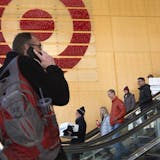Swinging traps. Narrow escapes. Death-defying feats.
The language of circus entertainment sometimes applies all too readily to real life, especially for the at-risk youth who find safe space to discover their calling and talents under the big tent of Zip Zap Circus School. Founded 32 years ago by former trapeze artist and Hollywood stuntman Brent van Rensburg and his wife, Laurence Estève, the Capetown, South Africa-based social circus works to foster resilience in kids caught up in drugs, gangs and stigmatized illness.
To audiences, social circuses are just like regular circuses in that performers display feats of physical virtuosity. But they differ in that their primary purpose is to better youngsters’ lives. Entertainment is a byproduct, not the focus, of that work.
“When kids are on the street, people pretend not to see them,” said van Rensburg. “What you don’t realize is that these kids have dreams like other kids. They just need a chance.”
Van Rensburg points to Zip Zap’s touring show, “Moya,” which kicks off the Children’s Theatre Company’s new season when it opens Saturday, as embodying the company’s values. A mix of classic and contemporary circus derring-do spiced up with South African music and dance, the show orbits the themes of resilience and perseverance.
“They’re not actors telling a made-up story — they’re telling the truth of their lives,” van Rensburg said.
We caught up with van Rensburg just before he left Capetown for Minneapolis. The interview has been edited for length and clarity.
Q: What is “Moya”?



